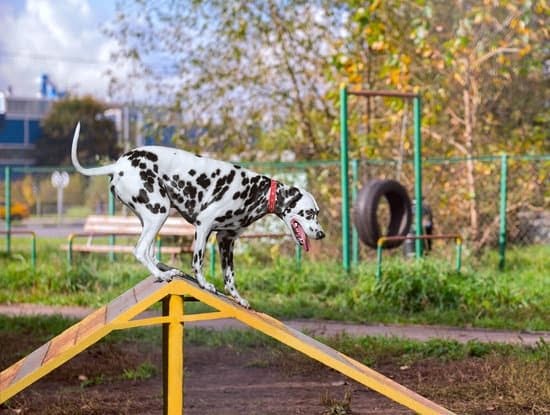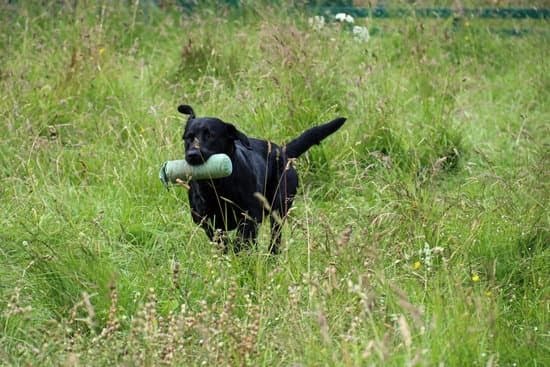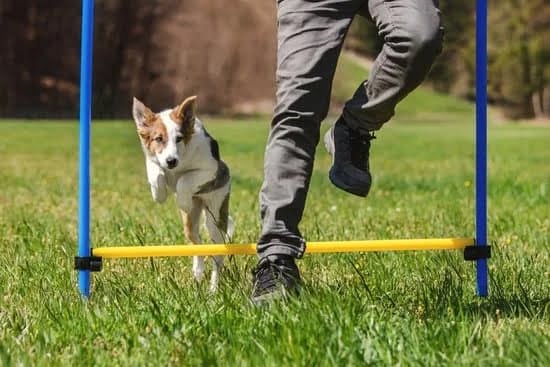Training your dog is an essential part of building a strong bond and ensuring a well-behaved pet. But where do you start and what do you need to train your dog effectively? In this guide, we will explore the necessary steps and tools required for successful dog training.
Understanding your dog’s breed and temperament is crucial before embarking on any training program. Each breed has unique characteristics that can influence their ability to learn and respond to training techniques. Additionally, knowing your dog’s temperament will help determine the best approach for effective training.
Positive reinforcement is a key component in successful dog training. By rewarding good behavior with treats, praise, or toys, you can encourage your furry friend to repeat those behaviors. Consistency is also vital in reinforcing positive behaviors and correcting unwanted ones. By setting clear expectations and boundaries, you can help your dog understand what is expected of them during training sessions.
Understanding Your Dog’s Breed and Temperament
Dogs come in a wide variety of breeds, each with its unique characteristics and temperaments. Understanding your dog’s breed and temperament is essential when it comes to training them effectively. Different breeds have different traits that may influence how they respond to certain training methods or commands.
For example, some breeds are known for their high energy levels, while others are more laid back. By familiarizing yourself with your dog’s breed tendencies, you can tailor your training approach to suit their needs.
In addition to considering your dog’s breed, it is also crucial to take into account their individual temperament. Just like people, dogs have their personalities which can play a significant role in how they learn and behave. Some dogs may be more eager to please and quick learners, while others may be more independent or stubborn.
By recognizing your dog’s temperament, you can adjust your training techniques accordingly to ensure success. For instance, a more stubborn dog may require extra patience and consistency in training.
When it comes to training a dog based on its breed and temperament, one size does not fit all. It is vital to personalize the training approach according to the specific needs of your furry friend.
Whether you have a high-energy working breed or a relaxed companion breed, understanding what motivates and engages your dog is the key to successful training outcomes. By taking the time to learn about your dog’s breed characteristics and individual temperament, you can create a tailored training plan that sets both of you up for success.
| Dog Breed | Temperament |
|---|---|
| Labrador Retriever | Friendly and eager to please |
| German Shepherd | Intelligent and protective |
| Poodle | Smart and hypoallergenic |
The Importance of Positive Reinforcement in Training
Positive reinforcement is a crucial aspect of training your dog effectively. This method involves rewarding your dog for exhibiting desired behaviors, making them more likely to repeat those behaviors in the future. By using positive reinforcement techniques, you can build a strong bond with your canine companion based on trust and mutual respect.
Why Positive Reinforcement Works
Positive reinforcement works because it rewards good behavior rather than focusing on punishing unwanted behavior. When you reward your dog with treats, praise, or toys for following commands or displaying desirable behaviors, they learn that these actions lead to positive outcomes. This creates a positive association with training and encourages your dog to continue learning and improving.
Using Positive Reinforcement Correctly
When using positive reinforcement in training, timing is essential. You must reward your dog immediately after they perform the desired behavior to reinforce the connection between the action and the reward. Consistency is also key – be sure to use the same rewards each time and avoid confusing your dog by changing the rules. Additionally, it’s important to use high-value treats that your dog finds especially enticing to keep them motivated during training sessions.
Essential Training Supplies
Training your dog requires the right supplies to set yourself up for success. Here are some essential training supplies that you will need to effectively train your furry companion:
- Collars: A well-fitting collar is crucial for ensuring your dog’s safety and control during training sessions. Make sure it is not too tight or too loose, and opt for a sturdy material that can withstand pulling.
- Leashes: Investing in a quality leash is important for teaching your dog proper leash manners and keeping them close during walks. Choose a leash length that gives your pup enough freedom while still allowing you to maintain control.
- Treats: Treats are a key component of positive reinforcement training. Find high-value treats that your dog finds irresistible to reward good behavior and motivate them during training sessions.
- Toys: Interactive toys can be used as rewards during training or as a way to keep your dog engaged and entertained. Incorporating playtime into your training routine can help strengthen the bond between you and your pet.
Without these essential supplies, it can be challenging to effectively train your dog. Remember that consistency is key when using these tools in conjunction with positive reinforcement techniques to shape desired behaviors.
When considering what supplies you need to start training your dog, it’s important to choose items that cater to both your dog’s needs and preferences. By creating a positive and engaging training environment with the right tools, you can set the stage for successful learning experiences with your furry friend.
Creating a Consistent Training Schedule
Establishing Routine and Consistency
Consistency is key when it comes to training your dog. By creating a consistent training schedule, you are setting your furry friend up for success. Dogs thrive on routine, so establishing set times for training sessions will help them understand what is expected of them. Whether it’s a short session every morning before breakfast or a longer session in the evening after your workday, make sure to stick to the schedule as much as possible.
Setting Realistic Goals
When creating a training schedule for your dog, it’s essential to set realistic goals. Understand that training takes time and patience, and not all dogs learn at the same pace. Start with basic commands and gradually move on to more advanced techniques as your dog progresses. Celebrate small victories along the way and be patient with your furry companion as they learn new skills.
Consistency Outside of Training Sessions
Training doesn’t just happen during designated sessions; consistency is required throughout your day-to-day interactions with your dog. Use commands like sit, stay, and come during regular activities such as feeding time or going for a walk. By integrating these commands into everyday situations, you are reinforcing what your dog has learned during formal training sessions. Remember that consistency both during training sessions and in daily interactions is key to a well-trained pup.
Basic Commands Every Dog Should Learn
Training your dog to learn basic commands is essential for their safety and overall behavior. Teaching your furry friend commands like Sit, Stay, Come, and Heel not only helps in communication between you and your pet but also establishes boundaries and expectations. So, what do you need to training a dog in these basic commands?
To start with, it’s important to have patience and consistency when training your dog. Use positive reinforcement techniques such as treats or praise when they successfully perform a command. This will motivate them to continue learning and obeying. Remember that every dog learns at their own pace, so it’s crucial to be patient throughout the training process.
Another important aspect of training your dog in basic commands is to ensure that you have the right training supplies on hand. Collars, leashes, treats, and toys can all be useful tools during training sessions. A well-fitted collar and leash are necessary for teaching commands like Heel, while treats can be used as rewards for following instructions.
Toys can also be used as motivation for practicing commands such as Stay. By having the appropriate supplies ready, you can make the training process more effective and enjoyable for both you and your furry companion.
Addressing Common Behavior Issues
One of the most common challenges that dog owners face is dealing with behavior issues such as barking, jumping, and leash pulling. These behaviors can be frustrating for both the owner and the dog if not addressed properly.
Understanding the root cause of these behaviors is crucial in correcting them effectively. Barking can be a result of boredom, fear, or lack of exercise; jumping might stem from excitement or seeking attention, while leash pulling could indicate a need for more structured walks.
To address barking, it’s essential to identify the trigger and work on desensitizing the dog through training techniques like positive reinforcement. Redirecting their attention to something else when they feel like barking can also be helpful. For jumping, teaching your dog an alternative behavior such as sitting when they greet people can curb this habit effectively. Additionally, providing enough exercise and mental stimulation can prevent excess energy that leads to jumping.
Leash pulling can be corrected by teaching loose leash walking techniques through consistent training sessions. Using treats and rewards to reinforce good behavior on walks will encourage your dog to walk calmly by your side. Remember that patience and consistency are key when addressing these common behavior issues. Seeking guidance from a professional trainer if needed can also provide valuable insights on how to effectively train your dog.
Training Techniques
When it comes to training your dog, it’s essential to understand the different techniques that can be used to effectively communicate with your furry friend. One popular method is clicker training, which involves using a small device that makes a clicking sound to mark the desired behavior. This technique helps reinforce positive behaviors and can be a powerful tool in shaping your dog’s behavior.
Another technique that can be used in training your dog is luring. This involves using treats or toys to guide your dog into performing a specific behavior. By using these incentives, you can encourage your dog to follow commands and learn new behaviors. Luring is especially effective for teaching tricks or more complex commands.
Shaping is another important technique in training dogs, which involves breaking down desired behaviors into smaller steps and rewarding each step until the full behavior is achieved. This method requires patience and consistency but can be very effective in teaching your dog new skills. By shaping behaviors gradually, you can help your dog understand what is expected of them and reinforce their learning process.
Incorporating these various training techniques into your training routine can help you establish a strong bond with your dog based on trust and communication. Each dog responds differently to training methods, so it’s important to experiment with different techniques to see what works best for your furry companion. Remember, consistency, patience, and positive reinforcement are key elements in successful dog training.
Enrolling in Obedience Classes or Seeking Professional Help
When it comes to training your dog, sometimes seeking professional help can make a world of difference. Obedience classes offer structured learning environments where both you and your dog can benefit from the expertise of trained professionals. These classes provide a great opportunity for socialization, as your dog will interact with other dogs and learn how to behave in different settings. Additionally, professional trainers can offer personalized advice and guidance based on your dog’s unique needs and temperament.
If you’re unsure about how to address specific behavior issues or struggling to master certain training techniques, enrolling in obedience classes can provide the hands-on support you need. Trainers can demonstrate proper training methods, help you troubleshoot challenges, and offer valuable feedback to ensure that you and your dog are on the right track.
With their experience and knowledge, they can tailor training programs to suit your dog’s personality and learning style, making the process more effective and enjoyable for both of you.
In some cases, especially if your dog exhibits severe behavior problems or requires specialized training, seeking professional help may be necessary. Certified dog trainers or behaviorists have the expertise to tackle complex issues and develop customized solutions to meet your dog’s needs.
By working closely with a professional, you can gain insights into why your dog behaves a certain way and receive guidance on how to modify their behavior effectively. Remember that investing in professional training not only benefits your furry companion but also strengthens the bond between you and enhances the overall quality of life for both of you.
Conclusion
In conclusion, training your dog is a rewarding journey that can lead to a strong and lifelong bond between you and your furry companion. By understanding your dog’s breed and temperament, using positive reinforcement techniques, and being consistent in your training schedule, you can set the foundation for a well-behaved and happy pet.
It is essential to have the right training supplies like collars, leashes, treats, and toys to make the learning process enjoyable for both you and your dog.
Basic commands such as sit, stay, come, and heel are crucial for effective communication with your pet. Addressing common behavior issues like barking, jumping, and leash pulling requires patience and consistent training techniques such as clicker training, luring, and shaping. If you find that you need additional guidance or support in training your dog, enrolling in obedience classes or seeking professional help can be beneficial in overcoming any challenges you may face.
Ultimately, the bond formed through training with your dog goes beyond just teaching commands – it strengthens the relationship between you two and builds trust and understanding. Training not only helps shape desired behaviors but also enhances the overall well-being of your pet. So remember to approach training with patience, consistency, and love to enjoy a fulfilling experience while creating unforgettable memories with your canine companion.
Frequently Asked Questions
What Equipment Do You Need to Train a Dog?
To train a dog effectively, you will need some essential equipment such as a collar, leash, treats for positive reinforcement, toys for motivation, and possibly clickers for clicker training. Having the right tools can make the training process smoother and more successful.
What Are the 7 Basics of Dog Training?
The 7 basics of dog training include obedience commands like sit, stay, come, heel, down, leave it, and drop it. Consistency, patience, positive reinforcement techniques, clear communication with your dog, proper socialization, and staying calm are also key elements in successfully training your canine companion.
How Do You Train a Dog for Beginners?
For beginners looking to train their dogs, it is important to start with simple commands like sit and stay before progressing to more complex behaviors. Using positive reinforcement techniques like treats or toys can help motivate your dog to learn and obey commands.
Consistency in training sessions is crucial for building good habits in your pet. It’s also important to establish a routine and set clear boundaries from the beginning to ensure a well-behaved dog in the long run.

Welcome to the blog! I am a professional dog trainer and have been working with dogs for many years. In this blog, I will be discussing various topics related to dog training, including tips, tricks, and advice. I hope you find this information helpful and informative. Thanks for reading!





